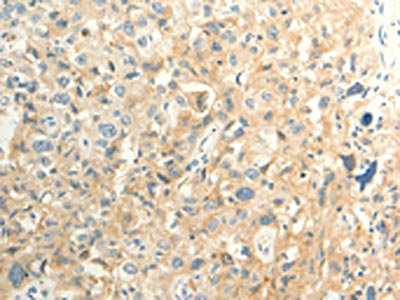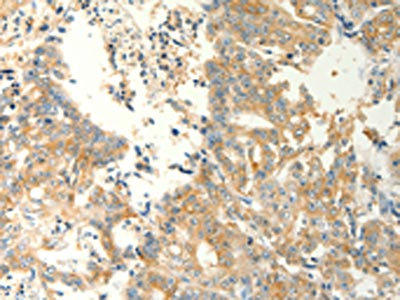
The image on the left is immunohistochemistry of paraffin-embedded Human esophagus cancer tissue using CSB-PA068600(FAT3 Antibody) at dilution 1/30, on the right is treated with synthetic peptide. (Original magnification: x200)
FAT3 Antibody
CSB-PA068600
ApplicationsELISA, ImmunoHistoChemistry
Product group Antibodies
ReactivityHuman, Mouse, Rat
TargetFAT3
Overview
- SupplierCusabio
- Product NameFAT3 Antibody
- Delivery Days Customer20
- ApplicationsELISA, ImmunoHistoChemistry
- CertificationResearch Use Only
- ClonalityPolyclonal
- ConjugateUnconjugated
- Gene ID120114
- Target nameFAT3
- Target descriptionFAT atypical cadherin 3
- Target synonymsCDHF15, CDHR10, hFat3, protocadherin Fat 3, FAT tumor suppressor homolog 3, cadherin family member 15, cadherin-related family member 10
- HostRabbit
- IsotypeIgG
- Protein IDQ8TDW7
- Protein NameProtocadherin Fat 3
- Scientific DescriptionFAT1, FAT2, FAT3 and FAT4 are human homologs of Drosophila Fat, which is involved in tumor suppression and planar cell polarity (PCP). The atypical cadherin Fat3 ensures that retinal amacrine cells (ACs) develop this unipolar morphology. Fat3 expression was restricted to the nervous system, for example in the brain, it is expressed in a variety of regions and axon fascicles. However, its strongest expression was observed in the olfactory bulb and retina.
- ReactivityHuman, Mouse, Rat
- Storage Instruction-20°C or -80°C
- UNSPSC41116161




